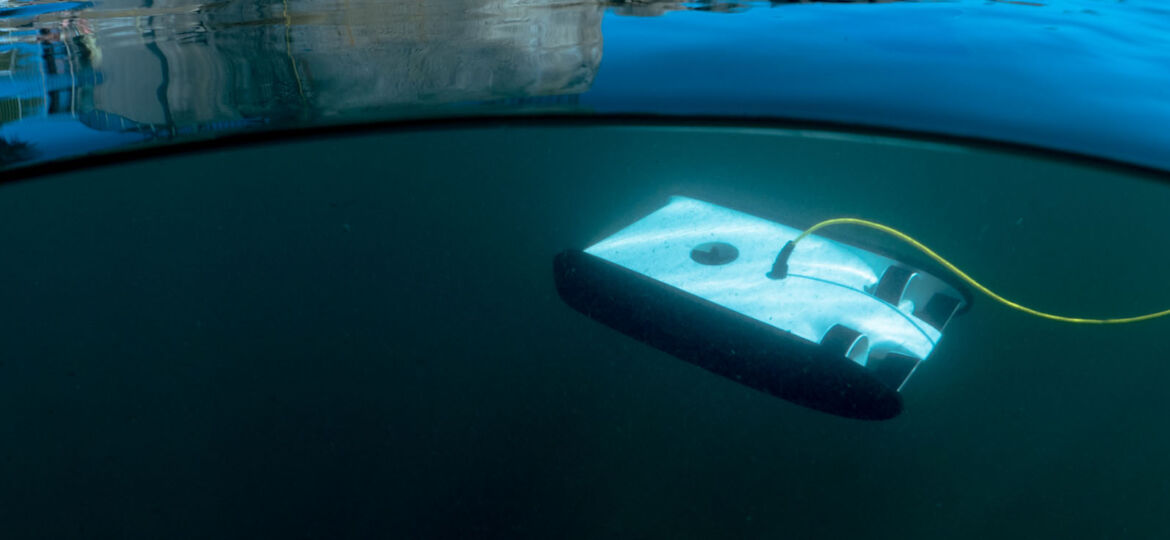
WHY THIS MATTERS IN BRIEF
When you’re on land you can just pop to a charging station and re-charge your vehicle, but underwater it’s not so easy – until now.
Underwater drones are becoming an increasingly popular – whether it’s to private industry who are increasingly using them to peer into the depths to check underwater communications cables and the legs of oil rigs, or the military, like the Russians, who recently tested their autonomous, nuclear capable drone submarine off of the US East coast.
That said though they all have a major problem, today’s batteries don’t last very long and that significantly limits their range. While DARPA, the bleeding edge research arm of the US Military, has suggested building undersea highways packed with drone “service stations,” now a start up spun out of MIT called Open Water Power, has created a potential game changer and built a new form of power system that drinks seawater to produce a tenfold increase in range.
Unmanned Underwater Vehicles (UUVs) are generally powered by Lithium-Ion (Li-On) batteries which pose a few problems. One is that they are a fire hazard, which let’s face it those are never two words that are going to go well together, and secondly their re-charge time isn’t that great either, which is one reason why one day they may be replaced altogether by fast charging polymers like those developed in the UK.
Now the team at Open Water Power say they have come up with a better way of doing things, and they liken their solution to a car engine, but where a car engine relies on air to act as an oxidiser to feed the chemical reactions, their new power system instead relies on seawater.
“Our power system can drink sea water and discard waste products,” says Open Water Power co-inventor Ian Salmon McKay, “but that exhaust is not harmful, compared to exhaust of terrestrial engines.”
The new battery consists of an alloyed Aluminium anode, a primarily nickel alloyed cathode and an alkaline electrolyte in between. As seawater is drawn into the system, the cathode splits it into hydroxide anions and hydrogen gas. The anions react with the Aluminium anode to create Aluminium Hydroxide and release electrons, which are then donated to the circuit.
The team claims this system can offer a tenfold increase on range over conventional Li-On batteries, and that it is both safer and more durable. The process is only triggered when the system is flooded with water, and while the researchers note that corroding of the Aluminium anode is a problem, it can still be replaced at low cost and they should learn soon enough how well these claims check out because they’re now working with the US Navy to deploy these batteries in the autonomous acoustic sensors used to detect enemy submarines and another pilot will kick off this summer with a company called Riptide Autonomous Solutions, whose underwater surveying drones currently travel around 100 nautical miles (185 km) on one charge. It hopes that this new tech can extend this range to 1,000 nautical miles (1,852 km).
I’m also sure that Boeing, who recently announced that they are teaming up with America’s largest ship builder to mass produce their own autonomous subs are on that list too, as well, perhaps, Liquid Robotics whose undersea drones are now protecting one of the world’s largest marine nature reserves. There are lots of applications and lots of company’s probably queuing up to get their hands on these things.
All of which could be just the tip of the iceberg. Other areas where Open Water Power’s new device could be put to use include basically anywhere we want a better idea of what is under the sea. It could power vehicles that dive deeper to map the ocean floor or shipwrecks, it could make long-range oil prospecting easier, or the search for missing airplanes such as that lost in the Malaysian Airlines crash in 2014.
“In looking for the debris, a sizeable amount of the power budget for missions like that is used descending to depth and ascending back to the surface, so their working time on the sea floor is very limited,” McKay says, “our power system will improve on that.”

















[…] while ago I reported on a new MIT innovation that let underwater drones use turn seatwater into electricity, and now scientists have taken a major step by improving a process for turning seawater into […]